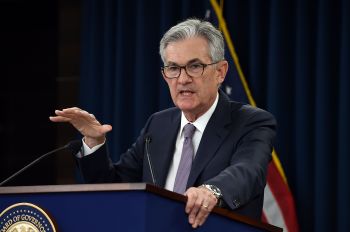Summer school: Federal funds rate
TESS VIGELAND: The Federal Reserve Open Market Committee met this week. They decided to leave the benchmark federal funds rate right where it was at 5.25 percent.
So, you say, what exactly is the federal funds rate? We asked some folks on the street outside the Fed meeting in Washington for a definition:
WOMAN #1: Federal funds rate? Not really sure how to answer that one.
MAN #1: I believe it’s 5 and a quarter percent.
WOMAN #2: I don’t know what it does, ‘cept that it probably takes my money.
MAN #2: I’m thinking they’re talking about short-term interest rates that affect car loan, or whatever.
WOMAN #3: My lack of knowledge on this issue would be an indication that I need to take some sort of fiscal policy course.
VIGELAND: . . . back to school?
[MUSIC: “School’s out for summer . . . “]
That may be true, but here at Marketplace Money, we never stop learning. Grab a Number 2 pencil, ’cause summer school’s in session.
And this week, Greg McBride of Bankrate.com helps us out with the federal funds rate.
GREG MCBRIDE: The federal funds rate is the rate that banks pay to borrow from each other in the overnight market. But more important than that, it’s an important benchmark for interest rates of all different types that impact businesses and consumers.
Banks have a requirement to keep a certain level of reserves depending upon how many deposits they’ve accumulated in all of their branches. Now, that requirement changes from day to day, as the amount of deposits that they have in their bank change from day to day. Some days, banks might be a little short, some days banks may have a little excess in reserves than they need. They don’t want this money to sit idol, so what they do is if they have an excess, they’ll lend it to another bank who might be short for the day. The next day, it could be the other way around, that they’re a little short, they need to borrow from another bank. The federal funds rate is the rate that banks are paying each other to borrow that money on a daily basis.
The rate that banks pay is important because it affects the rate that we pay. So when the Federal funds rate goes up, banks pass along that higher cost to businesses and consumers in the form of the prime rate. So if the federal funds rate goes up by a quarter of a percentage point, you’ll see the prime rate move up by also a quarter of a percentage point. And what this does is this means that any instrument tied to that prime rate, such as a credit card, home equity line of credit, all of those rates would go up by a similar amount.
When the Federal Reserve raises interest rates, they’re talking about that federal funds rate. And what they’re really doing is adjusting the target rate that banks would have to pay each other to borrow or lend money on an overnight basis.
VIGELAND: Our teacher is Greg McBride of Bankrate.com. More summer school next week, when we tackle earnings.
There’s a lot happening in the world. Through it all, Marketplace is here for you.
You rely on Marketplace to break down the world’s events and tell you how it affects you in a fact-based, approachable way. We rely on your financial support to keep making that possible.
Your donation today powers the independent journalism that you rely on. For just $5/month, you can help sustain Marketplace so we can keep reporting on the things that matter to you.


















